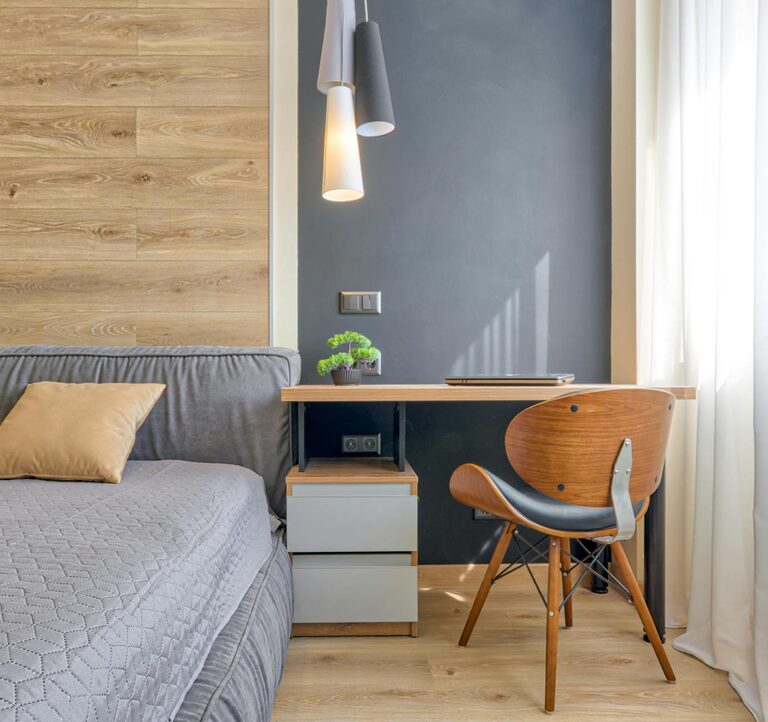
Creating a relaxing home workspace is essential in today’s world, where many of us spend more hours working from home than ever before. A space designed to promote calm and focus can improve your productivity and make your workday more enjoyable. In this post, we’ll explore practical tips and ideas to help you set up a relaxing home workspace that encourages concentration without feeling overwhelming.
Why a Relaxing Workspace Matters
Your workspace impacts how you feel and perform during work. A cluttered or uncomfortable area can cause stress, distractions, and fatigue. On the other hand, a space that feels calm and organized helps clear your mind, reduces anxiety, and supports sustained focus. Whether you have a dedicated room or a small corner, designing a relaxing workspace is within your reach.
Choose the Right Location
Consider Natural Light
Aim to set up your workspace near a window if possible. Natural light helps regulate your body clock, boosts mood, and reduces eye strain. Position your desk so that sunlight doesn’t cause screen glare but still brightens your area.
Minimize Noise and Distractions
Find a quiet spot away from daily household activity, if you can. Use noise-canceling headphones or white noise machines to block out disruptive sounds when needed. Inform your family or roommates of your working hours to reduce interruptions.
Invest in Comfortable Furniture
Ergonomic Chair and Desk
Comfort is key for a relaxing workspace. Choose a chair that supports good posture and keeps your back aligned. If possible, use a desk at the right height to prevent strain on your wrists and shoulders. Adjustable furniture options allow you to switch between sitting and standing.
Add Supportive Accessories
Consider ergonomic accessories like wrist rests, laptop stands, or footrests to make your setup more comfortable. These small additions can make a big difference, especially during long work sessions.
Declutter and Organize
Keep Only Essentials
Clear your desk of unnecessary items. Limit what’s on your surface to your computer, notebook, and essential tools. A clean, minimal space reduces mental clutter and distractions.
Use Storage Solutions
Use drawers, shelves, or organizers to store supplies and paperwork out of sight but within reach. Label storage containers to find items quickly.
Establish a Routine
Set aside time daily or weekly to tidy your workspace. Regular maintenance prevents clutter build-up and keeps your area inviting.
Personalize Your Space Thoughtfully
Add Plants
Indoor plants bring life and freshness to your workspace. They improve air quality and create a calming atmosphere. Low-maintenance options like succulents or pothos are ideal for busy professionals.
Choose Calming Colors
Soft, neutral tones or pastels can help create a relaxed vibe. Avoid overly bright or distracting colors that may hinder concentration.
Display Meaningful Items
A few personal touches like photos, artwork, or inspirational quotes can make your workspace feel welcoming. Keep them limited to avoid visual noise.
Optimize Lighting
Combine Task and Ambient Lighting
Use a desk lamp to focus light where you need it most, like on documents or your keyboard. Soften the overall space with ambient lighting to avoid harsh contrasts.
Consider Warm Light Bulbs
Warm-colored bulbs provide a cozy feel that helps reduce eye strain. Adjustable brightness options let you control the mood as needed.
Manage Technology Mindfully
Organize Cables
Unruly cables can create visual clutter and frustration. Use cable clips, sleeves, or ties to keep cords neat and prevent tangling.
Limit Notifications
Turn off non-essential alerts on your devices to minimize distractions. Use “Do Not Disturb” modes during deep work sessions.
Create a Relaxing Break Area
Take Breaks Away from Your Desk
Having a spot separate from your work area to relax for short breaks helps clear your mind. This might be a comfortable chair, a window seat, or even a small balcony.
Include Relaxation Tools
Items like a small diffuser for calming scents, a stress ball, or a journal can help reduce tension and refresh your focus.
Maintain Healthy Habits
Keep Hydrated
Keep water nearby to stay hydrated and alert. A stylish water bottle within arm’s reach encourages consistent drinking.
Stretch Regularly
Set reminders to stand up, stretch, and move around every hour. Physical movement reduces stiffness and fatigue.
—
Designing a relaxing home workspace is a rewarding process that combines comfort, organization, and personal touches. With the right environment, you can enhance focus, reduce stress, and enjoy your workday more fully. Start small, stay consistent, and make adjustments to find what works best for you. Your ideal workspace is just a few mindful steps away!

